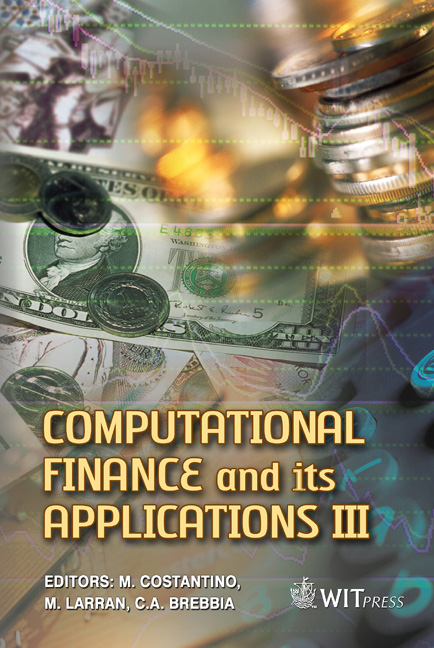Hedge Fund Portfolio Selection With Modified Expected Shortfall
Price
Free (open access)
Volume
41
Pages
9
Page Range
99 - 107
Published
2008
Size
247 kb
Paper DOI
10.2495/CF080101
Copyright
WIT Press
Author(s)
K. Boudt, B. G. Peterson & P. Carl
Abstract
Modified Value-at-Risk (VaR) and Expected Shortfall (ES) are recently introduced downside risk estimators based on the Cornish-Fisher expansion for assets such as hedge funds whose returns are non-normally distributed. Modified VaR has been widely implemented as a portfolio selection criterion.We are the first to investigate hedge fund portfolio selection using modified ES as optimality criterion.We show that for the EDHEC hedge fund style indices, the optimal portfolios based on modified ES outperform out-of-sample the EDHEC Fund of Funds index and have better risk characteristics than the equal-weighted and Fund of Funds portfolios. Keywords: portfolio optimization, modified expected shortfall, non-normal returns. 1 Introduction It is generally accepted that rational investors should allocate their portfolio optimally according to a return/risk criterion. The most widely studied criteria (minimumvariance and maximumSharpe ratio) are based on the first two portfolio moments. A more general set of positive preferences for odd moments (mean, skewness) and aversion to even moments (variance, kurtosis) is discussed by Scott and Horvath [1]. For largely intuitive reasons, the relationships between the moments themselves are often summarized into risk measures. In the presence of non-normal returns and when investors have a non-quadratic utility function, two issues arise: (i) the choice of risk measure and (ii) the estimator for this risk measure.
Keywords
portfolio optimization, modified expected shortfall, non-normalreturns.





